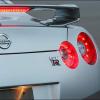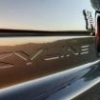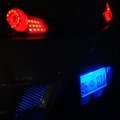R34 Gt-t Turbo Upgrade
Announcements
-
Similar Content
-
Latest Posts
-
2 spots that my exhaust guy joined the 2 pipes together Made a big difference. I'm now able to live with it. I can make it louder if I want by removing the HKS caps.
-
Hi all, considering clutch upgrade to support 1130 engine hp from 1650cc injectors on e50 at 85% duty cycle (1650 x (11.85/14.7) x 85%). Narrows down to these three as they can be converted to use gm 26 spline input shaft if I ever want to use transmission with that input shaft (orc1000f and r3c easy/cheap just change center hub; tr2cd pricier must change clutch discs). Pricing orc1000f similar to tr2cd, r3c about usd 200 pricier. Orc1000f triple plate 200mm. Tr2cd twin plate 215mm. R3c triple plate 215mm. Claimed max torque : orc 1000f 723 lbs ft; tr2cd 800 lbs ft; r3c 1100 lbs ft. Why orc1000f triple plate but claims lower max torque vs tr2cd twins? Is orc1000f underrated? Any info maxing out these clutches? Info on street/traffic driveability/pedal feel? Thank you for any info on them.
-
By Dose Pipe Sutututu · Posted
Some troubleshooting, connect up a timing light/gun with a proper ignition lead on coil 1. Hold the revs at 4~4500rpm and see if your timing is all over the shop, scattering off its tits. If so, there's a high chance your CAS is fked. But I read you have a Link ECU ready to go in, why not just skip all this and put that in - will make troubleshooting so much easier. -
Misfires when the car is fully warm are generally attributed to the coils (and/or the igniter, on cars with a separate igniter). They can stop working properly when they get hot for a number of reasons. Either electric/electronic, or from thermal expansion opening up gaps and allowing HV leakage. Seeing as you have replaced the coils, that could/should rule them out. But I wouldn't always assume so. Were the coils genuine? Or is there a chance you have bought some counterfeit Chinesium shit? Then we're back onto loom connections. They can fail when warm/hot for the same reasons. Inspections, cleaning of contact surfaces, ensuring that terminals are fully inserted, etc etc, are all justified. The same (heat effects) holds true for the other electrics and their connectors. AFM & CAS, primarily. If you try that Chinesium AFM, drive it around on low load until it is properly hot, but do'nt give it more load than you have to, except when you need to see if it will still miss. I'm dead serious about the untrustworthiness of the calibration of those copy AFMs. Injectors are unlikely to get hot unless the fuel is coming back around hot. You could try squirting them with compressed air or freeze spray to cool them back down to see if they are maybe the cause.
-
Alright, all the plugs looks good. Noticed that it starts to get bad when the car is up to temp, that's when things starts to misfire hard. next to do is Injector cleaning and such. Got in touch with a shop to do work on the injectors next Monday also help on diagnosis.
-








Recommended Posts
Create an account or sign in to comment
You need to be a member in order to leave a comment
Create an account
Sign up for a new account in our community. It's easy!
Register a new accountSign in
Already have an account? Sign in here.
Sign In Now